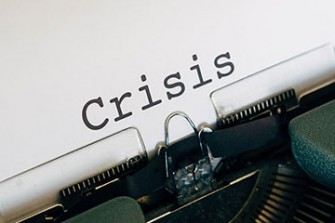‘Each person represents a different way to solve a problem’ is an excellent recent observation from a senior American director. [1]
Yes, boards should look like the people they purport to serve, but what is needed most is diversity of thought. This can come from many sources. With the right people around the table, it is possible that diverse thinking may occur naturally. A structured approach adds discipline, applying known models and processes.
In this series of articles, we look at mental models and decision processes. We acknowledge the regular wisdom of the Farnam Street blog [2] and their excellent book The Great Mental Models. [3]
A lovely quip is attributed to Alfred Sloan, [4] long-time president, chairman and CEO of General Motors in the ’50s, when ‘what was good for GM was good for America’. Addressing his undoubtedly all male board at the end of meeting, he said:
Gentlemen, I take it we are all in complete agreement on the decision here. Then I propose we postpone further discussion of this matter until our next meeting, to give ourselves time to develop disagreement and perhaps gain understanding of what the decision is all about.
Solid wisdom here, making clear that a pause in a decision-making process leads to better outcomes. We also know that the quality of the decision relies heavily on the process followed:
The best decisions are made when people take time to study the decision-making process and not just the decision itself. [4]
There is considerable evidence that adhering to a set of rules when making decisions outperforms personal judgement, intuition and gut feeling:
While analysis is important in decision-making, the process used matters more than analysis by a factor of six. [5]
We learn from making errors—trite but true. But little learning is derived from poor process, which brings with it a high chance of repeated error:
Even if the outcome of a decision is positive, it doesn't necessarily qualify as a success. If the process was shallow, you were lucky. If the outcome is negative but you evaluated the process thoroughly you have run a smart experiment. [6]
We have deep faith in our own wisdom and experience, and gut instinct surely has a place. But in their sobering assessment of human judgement, Kahneman et al conclude:
Comparing the accuracy of predictions made by professionals, machines and using simple rules you will not be surprised by our conclusions that professionals came third in this competition. [7]
Here are some mental models that can be considered. None is a cure-all and all need to be used selectively and in context.
Inversion
Many problems cannot be solved by simply thinking forward, and an inversion mindset starts at the end.
There are two approaches. Start by assuming that what you are trying to prove is either true or false then show what else would have to be true. This has become a central part of scientific and philosophical inquiry. We can’t see sub-atomic particles, but we can test predictions about their behaviour.
The fictional detective Sherlock Holmes was a master of inversion, systematically testing his assumptions. If this were true, what else would also need to be true? The strategic thinker Roger Martin [8] notes the most important question in strategy formulation: what would have to be true (WWHTBT) for this to be a valid choice for action?
Or think about what you must avoid to achieve a goal, then see what options are left over. Avoiding stupidity is easier than achieving brilliance. This may not always solve a problem, but it helps avoid likely trouble. For example, rather than think of all the things that would encourage innovation in your organisation, it may be easier to identify and stop those things that impede it. Charlie Munger, Vice Chairman of Berkshire Hathaway, notes:
It is remarkable how much long-term advantage people like us have gotten by trying to be consistently not stupid, instead of trying to be very intelligent. [9]
Munger also believes that you are not entitled to hold an opinion until you understand the opposite side of the argument better than the person holding that view does.
Related planning tools are back-casting, starting with the desired end point and determining what needs to be in place for this to come to pass and—importantly—what you need to stop doing.
Another approach is the pre-mortem, analysing a proposed project by asking what could possibly go wrong, thereby highlighting any faults in the assumptions. This is a non-judgemental process that removes ego vested in ownership of the idea. It should be approached based on looking for improvement rather than killing the idea itself.
First principles
First principles are foundation elements that stand alone. They cannot be deduced from other propositions or assumptions. Euclid’s thirteen-book series The Elements is the bedrock of first principles in geometry. It is estimated that the number of published editions is second only to the Bible.
Reasoning from first principles breaks complex ideas down into blocks of basic ideas, then rebuilds them from the ground up.
Aristotle wrote [10] of first principles, describing them as the first basis from which things are known:
In every systematic inquiry (methodos) where there are first principles, or causes, or elements, knowledge and science result from acquiring knowledge of these.
Reasoning by first principles removes assumption, bias, dogma and guesswork from the process, leaving just the essential elements. It is too easy to accept information as provided. If we cannot deconstruct it, shake the assumptions and reassemble the ideas then we are doomed to view the world as others serve it to us. Endless examples exist of failure stemming from an ignorance of first principles. The collapse of the American railroad system is taught in business schools. It was caused by an entrenched belief in the railroad business rather understanding the needs of people to move from A to B. Consequently, railroad businesses were steamrolled by the advent of the interstate system and accessible commercial air travel.
We often use some simple governance first principles in our work, especially when confronted with gnarly issues:
- The board is a subset of its owners, representing their interests. As John Carver says, ‘a layer of ownership down, not a layer of management up’.
- The board has a distinct and separate value-adding role. This should be discussed, agreed and documented.
- The board is physically in session less than 1% of the time, therefore needs mechanisms of oversight and control in effect for the other 99%.
- The board’s guidance and decisions are as high-level as possible, leaving management discretion to implement.
- The board is intentional about how it uses its precious time.
There are others but adherence to these five is a strong start.
In a broader context there are several ways to locate first principles. Here are two:
Socratic questioning
This is generally gathered into six groups of questions:
- Clarifying your thinking and origins of your ideas
- Why do I think this? explain further - Challenging assumptions
- Is this always the case? Why is this relevant here? What if the opposite were true? - Seeking evidence
- Give me an example? What are the sources and references? - Other viewpoints and perspectives
- Alternative perspectives—what do others think? - Consequences and implications
- What if I am wrong? How does this tie in with other things? - Question the question
- What was the point of the original question? Why did I think that?
The Five Whys
Many of you will know this one, most famously used by Toyota for process improvement:
- A machine broke. Why?
- The cooling fan failed. Why?
- The bearing overheated. Why?
- It didn’t get its scheduled maintenance. Why?
And so on until the root cause is found—possibly a technician’s sick day and/or a documentation failure.
This can be a challenging process because it often forces people to admit they don’t actually know why and are operating on assumptions or received wisdom:
As to methods, there may be a million and then some, but principles are few. The man who grasps principles can successfully select his own methods. The man who tries methods, ignoring principles, is sure to have trouble. - Harrington Emerson [11]
Reasoning from first principles is helpful with complex problems, novel ideas or problematic situations.
Step back, remove your assumptions and rebuild from base points established by others. It enables you to challenge existing methods to see if they are still valid.
Notes:
[1] Anastassia Lauterbach, in Adam Bryant's New Directors Chair. 11 November 2021
[2] https://fs.blog/
[3] https://en.wikipedia.org/wiki/Alfred_P._Sloan
[4] Lehrer, J. cited in The Practitioner's Guide to Governance as Leadership. Jossey Bass 2013
[5] McKinsey
[6] Grant, A. Think Again, WH Allen 2021
[7] Noise. Kahneman D, Sibony O, Sunstein C. William. Collins 2021
[8] https://rogerlmartin.com/
[9] Charlie Munger, quoted in Farnam Street blog, 5 December, 2021
[10] Aristotle, Physics 184a10–21
[11] Harrington Emerson American efficiency engineer and business theorist.








